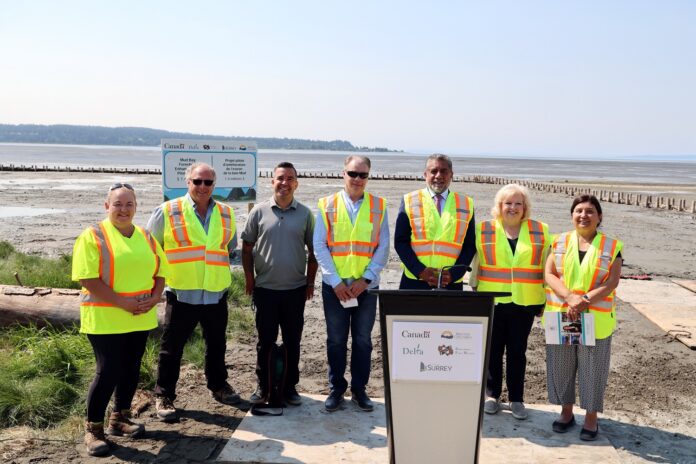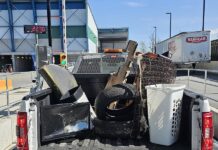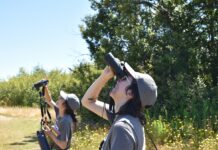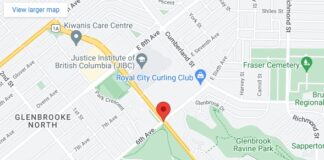
THE City of Surrey is leading the way in B.C. in testing an innovative, green approach to coastal flood protection known as a ‘living dyke’ with the Mud Bay Nature-based Foreshore Enhancements Project.
Surrey has partnered with the City of Delta and Semiahmoo First Nation on the project. Semiahmoo First Nation has been involved in the project since its inception and has played a key role in informing and guiding the project that is situated within their traditional foreshore territory.
The project is valued at $1.4 million and is funded in part by the Province of BC and the Government of Canada through the Disaster Mitigation and Adaptation Fund.
“I would like to thank our funding partners for making this project possible, and Semiahmoo First Nation for sharing their traditional knowledge on this innovative project,” said Surrey Mayor Brenda Locke. “By working together, we are able to explore sustainable solutions to protect our communities and vital infrastructure from the impacts of climate change while supporting our environment including the ocean and our rich coastal ecosystem.”
Mud Bay is home to internationally recognized wildlife and unique habitats including mud flats, eelgrass beds and salt marshes. Salt marshes offer natural flood protection, improve water quality, store carbon, and support wildlife but are in danger of disappearing due to coastal squeeze from sea level rise. The living dyke will be created by adding sediment and planting native salt marsh species on the foreshore. More marsh will be planted over time to help the natural marshes lining Boundary Bay adapt to sea level rise. The City will follow an adaptive management approach and monitor the site over time, making adjustments as needed.
Various stabilization techniques are being tested including sand berms, oyster shell bags, brushwood dams and rock berms to keep the vegetation in place. The results and lessons learned from the studies will be used to inform the design and construction of the full living dyke project in Surrey which will span 1 km. Construction of the full living dyke is anticipated to take place 2025-27 provided all permits are secured on time and studies are successful.
“As part of our collective efforts against global climate change, it is crucial that we invest in infrastructure that will protect our communities, wildlife, and the environment. The Government of Canada is proud to support this project that is creating a greener and more sustainable today for a better, safer tomorrow. We remain committed to collaborating with our partners and Indigenous communities to improve the health of the planet and the lives of all Canadians,” said Sukh Dhaliwal, MP for Surrey—Newton, on behalf of Dominic LeBlanc, federal Minister of Intergovernmental Affairs, Infrastructure and Communities.
“The federal government is always looking for innovative ways to adapt to the challenges climate change presents. By investing in the Living Dyke project, we are helping Delta and Surrey leverage natural infrastructure and other tools already at their disposal to better protect what matters most to our communities. The Government of Canada is proud to work with our funding partners to build a more sustainable and more resilient future,” said Carla Qualtrough, federal Minister of Employment, Workforce Development and Disability Inclusion and MP for Delta.
“Protecting our shorelines now from the threat of rising sea levels is essential as we confront the realities of climate change,” said Jinny Sims, MLA for Surrey-Panorama. “The Province is proud to be a funding partner in this pilot project that protects people, farms, wildlife and critical transportation infrastructure, and aligns with our government’s development of a B.C. Flood Strategy.”
“Delta is pleased to be a part of this innovative partnership and nature-based solution in our efforts to protect our environment and the resilience of foreshores across our communities,” said Delta Mayor George V. Harvie. “This project represents a bold and forward-thinking approach to safeguarding our communities from coastal flooding. Through collaboration with partners, experts, and our community, and thanks to funding from the provincial and federal governments, we are taking proactive steps to ensure the long-term resilience of our coastal areas, while forging a path toward a sustainable future.”
“The Mud Bay Living Dyke project will serve as an example to coastal communities across the Fraser Delta and beyond as a more sustainable approach to adapting to climate change and sea level rise,” said Semiahmoo First Nation Chief Harley Chappell.
Learn more at surrey.ca/mudbay.












